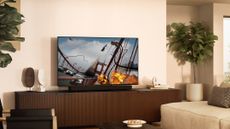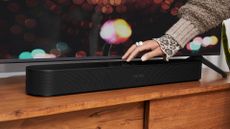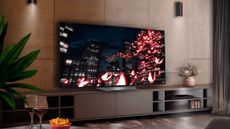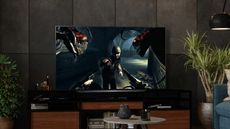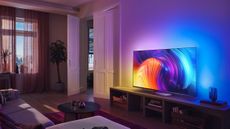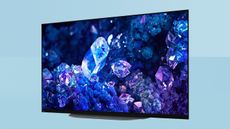One of the highlights of CES way back in January was when Samsung unveiled the first microLED TV, albeit in a giant 110-inch size. This new technology works just like OLED TVs, in that the pixels emit their own light (rather than requiring a backlight, like regular LCD LED TVs do) – however, microLEDs would be able to go brighter than OLED TVs, and would have a longer life and no possibility of burn-in.
When Samsung announced its first microLED, it also showed off that it would be available in smaller sizes, down to 70 and 80 inches. But now a report from Korea (via FlatPanelsHD), says that Samsung isn't expecting to launch TVs in those sizes any time soon – not until 2023 at the earliest.
I own the LG C1 OLED and, seriously, this Black Friday deal on it is unmissable
Now, admittedly, 70- and 80-inch TVs are still massive, so it's not like microLED was poised to break into the average living room or bedroom. But those sizes are increasingly popular at home, and anything larger is getting more into the territory of competing with the best projectors rather than the best TVs.
The problem is that the panels remain prohibitively expensive to produce, and while we're sure Samsung could make them, it presumably is not convinced anyone would buy them. When you consider the sums LG is charging for its 8K OLED TV or rollable OLED 4K TV, we might be talking some huge figures for Samsung to be actually put off.
It's also true that both LCD and OLED TV prices are in the middle of falling, meaning that 70-inch microLED prices might be priced several times higher than even Samsung's flagship QLED 8K TVs – and given that its microLED sets are planned to be 4K at all sizes for now, maybe Samsung doesn't want it to look like some grand televisual folly.
That's okay – as excited as I am for microLED, we're only just getting started with mini-LED, so maybe we can just focus on getting that into more TVs for now.
Mini-LED doesn't work like microLED – it's like current LCD tech, with a backlight behind the pixels. But the backlight consists of tens of thousands of tinier lights, which allows it to shine brighter, but also to offer more precise local dimming.
Mini-LED blew us away in the best TV in the world currently – the Samsung QN900A – as well as in the more affordable Samsung QN85A TV. And also in the new iPad Pro 12.9-inch (2021) and the new MacBook Pro (2021).
It offers contrast precision that comes near to effect OLED has of being able to put light and dark immediately next to each other with no bleeding, but can hit overall brighter levels than OLED, so it looks spectacular with HDR.
And we've barely gotten started with it – right now, there isn't a single mini-LED TV that's cheap enough to be in our list of the best TVs under £1000 or best TVs under $1000, and there aren't any smaller than 55 inches (though that will change soon, Samsung says).
So fine, we can play with making mini-LED more mainstream while we wait for microLED to become affordable – just don't keep me waiting too long, Samsung.




